The Jackson County Courthouse in the public square was built in 1911-12, designed by architect Richard H. Hunt with additions by Charles McCauley. It is described as a Neo-Classical, two-story, red brick building whose north and south facades are identical, massive, two-story porticos of Roman Doric order, each composed of four stone columns with boxed cornices. The design features a brick-filled pediment area, dentils on the cornice and raking cornice, a stone architrave trim, and console brackets at entrances. There are six brick pilasters on each side of the entrance with stone capitals and bases. The transom lights over the doors are from the 1869-71 courthouse. Two stone belt courses encircle the building. The east and west facades are identical, one-story porticos, featuring a plain entablature with a stone balustrade above, Roman Doric-order columns paired at the corners, with framing of doors identical to the north and south. The cupola is identical on all four sides, with a triangular pediment, projecting cornice, and broken entablature. Ionic order columns flank a Seth Thomas clock with corner pilasters. Major renovations were made in 1954 when the wings were added. The interior wooden walls were removed and replaced with marble. In 1967, there was an addition to the south face.
The courthouse for Jackson County has been maintained at several different locations and housed in several different buildings before coming to rest on the current site, reflecting the changing demographics and priorities of the county.
Sauta
Jackson County, Alabama, was created on December 13, 1819. Forty nine years later, Scottsboro was incorporated and became the county seat the same year--1868. From the beginning, the single, most important building in Scottsboro has been the Jackson County Court House. All other growth factors have been secondary to the controversial legislation which made Scottsboro Jackson County's second permanent seat of justice.
After Alabama became a state on December 4, 1919, the first location of Jackson County’s courthouse was Sauta Cave. Records show that on December 18, 1819, the new House of Representatives of Alabama declared that “Sauta Cave shall be, and is hereby established the temporary seat of justice for the county of Jackson: Provided, that the county court shall have the power, by adjournment, to select any other place they may deem more expedient.” At the same time Sauta Cave was made one of the three election precincts in Jackson County. The court did elect to remove to Thompson’s residence at Sauta a few miles from Sauta Cave.
In the 1970’s Mr. Julian Clemons, a gentleman in his nineties, reminisced about Jackson County’s early history based on information from his grandfather. He told there was a jail and a courthouse built at Sauta. On December 7, 1821, Jackson County was split into two counties: Jackson and Decatur Counties. Sauta was then located in the new county of Decatur and Jackson County was without a county seat. Bellefonte was elected to be the new county seat of Jackson and was incorporated on December 15, 1821. (Patty Woodall, Jackson County Chronicles, January 2003)
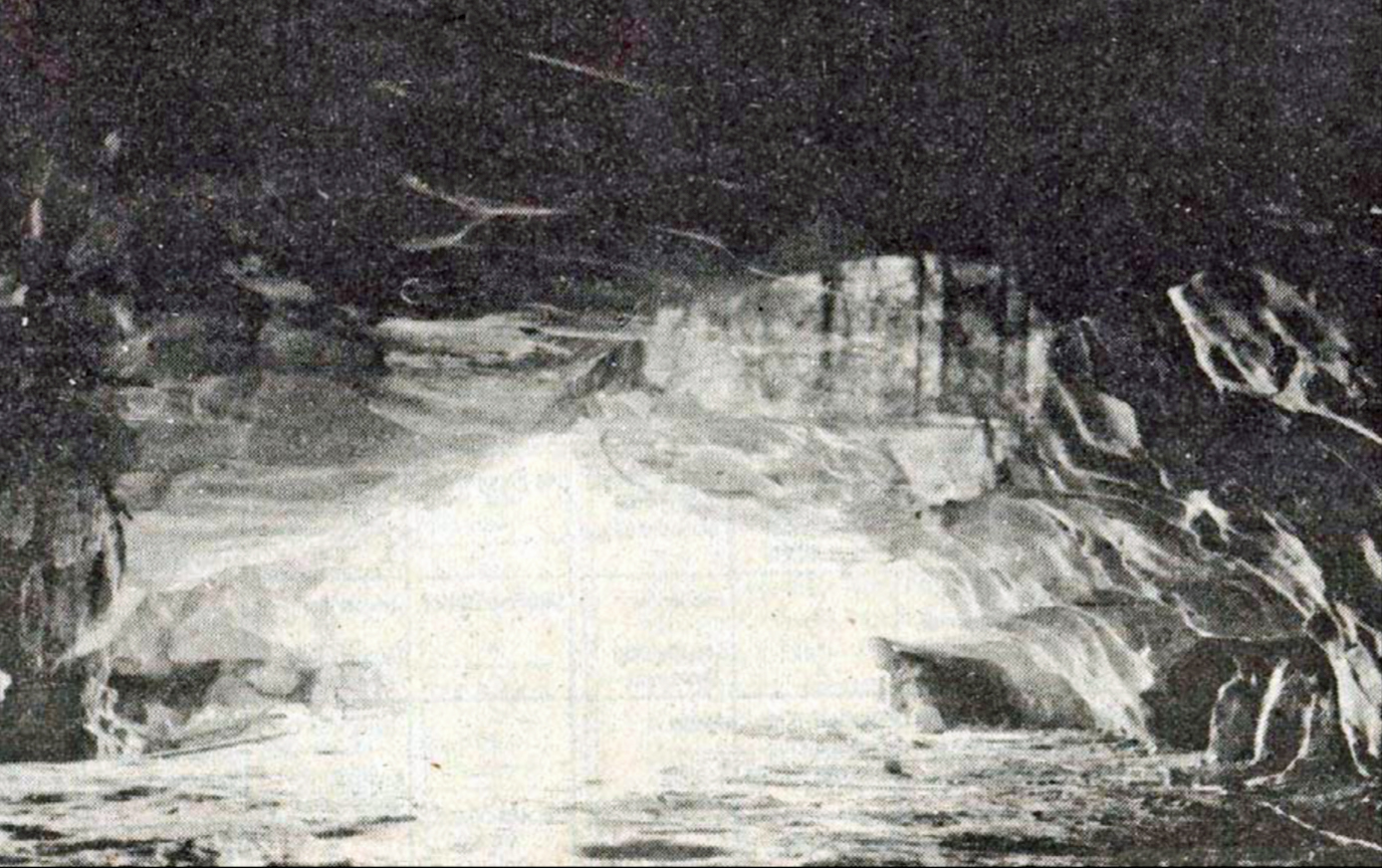
Sauta Cave
The 1826 Alabama Legislature directed the county commissioners to lay off a town, surveying and selling lots at the permanent seat of justice for the County of Jackson and “cause the public buildings for said county to be erected and caused to be laid out a public square of such dimensions as they may deem proper.” The commissioners were also to receive proposals for building a CourtHouse and Jail (in Bellefonte). (Act of the Alabama Legislature approved January 7, 1826) (Jackson County Chronicles, October 2009)
Bellefonte
On December 13, 1827, an Act of the Alabama Legislature extended the Corporate limits of Bellefonte so as to include the 100 acres of land donated to the County by Stephen Carter and George W. Higgins to defray the expenses of public buildings in Jackson County. Obviously this sizable land donation influenced the commissioners to consider Bellefonte for the county seat. In 1828,Bellefonte was selected as the first permanent seat of justice in Jackson County,a courthouse was erected in the Bellefonte town square (the Jackson County Chronicles, citing J . R . Kennamer’s HISTORY OF JACKSON COUNTY, ALABAMA, originally published in 1935).
The importance of Bellefonte is easy to see in the early map. There is not Scottsboro (not even any Scottsville, the name appearing on slightly later maps). But Bellefonte is on the old stage route and on the river, ideally situated as the new capitol of Jackson County.
DATE map of Bellefonte
In 1844, there was a fire in the Bellefonte Court House, most likely from a chimney defect. Deeds which had previously been recorded in Jackson County were re-recorded in Madison County, with the deed stating the purpose of there-recording was due to the original deed being burned at Bellefonte Court House in 1844. (Jackson County Chronicles, April 2005)
But the real tragedy of the Bellefonte courthouse location came during the Civil War. In an August 23,1863, letter to his parents written from Bellefonte, Alabama, Sgt. Major Lyman S. Widney of the 34th Illinois Volunteer Regiment of the Union Army described his regiment’s six-day march from Tullahoma, TN, to Bellefonte,AL. Widney also described the Bellefonte courthouse as “an excellent one for this country... built of brick and 2 stories high...surrounded by a fine cluster of locust trees.” Lyman Widney stated: “Yesterday morning, Headquarters was moved to the Court House,and the Adjutant’s Office located in the room formerly occupied by the Clerk of Court. We found all the old records of the county scattered over the floor. The documents are dated as far back as 1820. About 50 large books we reserved while the remaining books and papers were collected in one great heap and burned. There were not less than 3 bushels of marriage licenses and bonds.” Based on existing court records,the 50 large books “reserved by the Adjutant” must be t h e extant deeds and Chancery Court records which pre-date the Civil War period. This letter also explains why there are no extant marriage records and estate settlement books prior to 1851. (Jackson County Chronicles, April 2005)
Scottsboro
After the courthouse at Bellefonte was burned, the town never recovered from the devastation of the war, and the county seat was moved to Scottsboro.
Using his political skills, Robert T. Scott lobbied the county commissioners to move the county seat from Bellefonte to Scottsboro. The Civil War and Scott’s untimely death in 1863 at the hands of Federal troops did not deter his family from pursuing Scott’s dream after the War.
As Administratrix of her late husband’s estate, Elizabeth Ann Scott followed Scott’s wishes. In an act of generosity, the Scott heirs gave the county lots for a public square on which to erect a court house. John Whitfield also donated lots from acreage he had previously purchased from Robert T. and ElizabethAnnScott. Auction of lots from these two sizable land donations provided both land and money necessary to build the courthouse. County records were moved from Bellefonte to Scottsboro in November 1869,thus assuring the growth and development of Scottsboro as the legal and market center of Jackson County. When incorporated in January 1869, the city limits extended one-half mile in all directions from the depot. (Jackson County Chronicles, July 2004)
On January 5, 1869, Judge David Tate and County Treasurer Nelson Kyle had been authorized to contract for the building of a house on the public square 40 feet by 20 feet for the sum of $200 out of funds set apart for court house purposes. Newspaper accounts indicate that Judge Tate moved into this new double office building on the public square, but his stay here was short lived because the County Commissioners sold the 20 x 40 building on the square to John D. Boren. In the April 8, 1869, edition of The Southern Industrial Herald, the editor reported that Judge Tate would soon move the probate records back to "the Brick House formerly occupied by him" which he (Tate) had rented from M. V. Conley.
In the meantime, A. J. Huggins was allowed the sum of $25 paid out by him for office rent for the circuit clerk and sheriff up to November 1, 1869. The same day, A. J. Huggins was reimbursed $2.50 for money expended to purchase a desk for use by the circuit clerk. In November of 1869, Thomas J. Wood received $20 f o r house rent for courthouse during the Fall Term of the Court. At that time the only building in Scottsboro large enough for a courtroom would have been the first school building in the village. The building faced Chestnut Street (north of the railroad) and was purchased by T.J. Windes in 1868 from Mrs. R.T. Scott. In this two-story building, T.J. Windes established the first Scottsboro High School in 1868, and then sold same to Thomas J. Wbod in 1869. Mr. T.J. Wood was a Mathodist minister and a school teacher, and conducted the school after Mr. Windes left Scottsboro in 1869. Mr. Wood also allowed the village residents use of his building for church services until the "Brick Church" was built in 1870 on the corner of Laurel and Caldwell Streets.
Even before the village was officially incorporated in January 1869, the founding fathers supported classroom education in Scottsboro. In 1868,Thomas G. Windes purchased eight lots from Mrs. Robert T. Scott. (Jackson CO, AL Deed Book 3, p. 587) In an October 1868 edition of The Alabama Herald,Thomas G. Windes advertised the opening of his school. The frame building was located on Lot 91 between Main Street (now Maple Avenue)and Chestnut Street. In August 1869, Mr. Windes sold this property to Thomas J. Wood who rented the building to the Jackson County Commissioners, and court was held at this site while the courthouse was being constructed in Scottsboro. (Jackson County Chronicles, January 2000)
After its completion in 1871, the court house became the center of a 5/8 mile city limit radius. The first business house on the public square was built in 1870; the second building was erected in 1880. Both buildings were on the east end of the north side of the square. In 1881, a fire damaged several business houses on both sides of the railroad. One by one,these businesses began to move to the courthouse square. (Jackson County Chronicles, July 2004)
This 1871 courthouse is shown below.
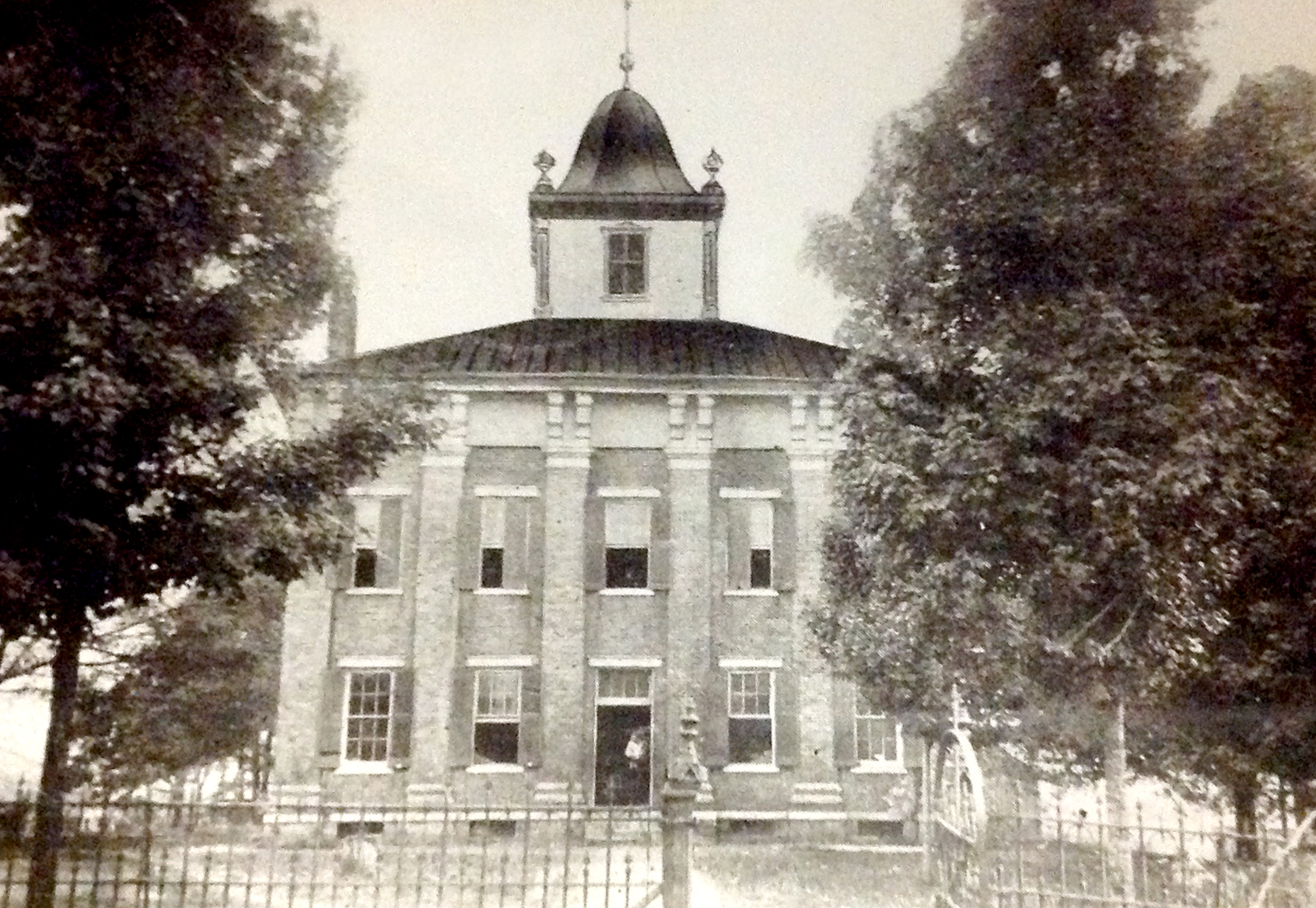
The June 6, 1884 Huntsville Advocate (Page 3, Column 5) reported the following: We had the pleasure during this week of visiting Scottsboro,and of seeing somewhat of the good old county of Jackson and its intelligent, honest and hospitable people. We found the crops of corn and cotton backward, but clean. The wheat was not looking well, and every character of vegetation was wanting rain,(which has come at last). We found Scottsboro improving slowly. Quite a number of pretty residences have been built and also a number of good business houses erected on the Courthouse Square. The Hotel has been enlarged and is kept by Mr. John Harris, who knows how to keep Hotel. We visited the Spoke and Single Tree Factory,managed by G.W.Swartz, who is one of the public spirited, energetic, and progressive men of North Alabama. We also met Messrs. C. W. Hunt and S. H. Glover, the Independent candidates for the Legislature, also G. W. Garland Independent candidate for Tax Collector, and David I. Durham, Independent candidate for Assessor. We also met the able and distinguished Editor of the Herald, Alex. Snodgrass, who, from the sign of frost upon his head and the weakness in his back, shows that he is keeping pace in wearing away, with the democratic party. Armstrong of the Citizen was looking well, but a little careworn,sort of as if he wished he was a freeman and could vote for Dicus and those other Independent fellows. Then we saw friend (W.H.) Payne,the Druggist,and several others who we will refer to when we have more space. Jackson is a great county.” (Jackson County Chronicles, April 2013)
Was the Little Brick ever the courthouse?
On September 10, 1968, the Jackson County Commissioners met, in Bellefonte, and selected "the ground south of and near Andy Whitworth . . . as the point for erection of the county buildings." G.W.Stovall was immediately directed to lay off said lands in Scottsboro according to the directions of the Court of Commissioners." Land for the county buildings was donated by the heirs of Robert T. Scott who also gave the county every other lot in what became the public square surrounding the court house.
The county records were moved from Bellefonte to Scottsboro in November of 1868, and were housed in temporary quarters while the first court house in Scottsboro was being built. Probate Judge David Tate occupied "the new brick built by M. V. Conley" just south of the Memphis & Charleston Railroad about one-half block from the depot.
On April 12, 1869, the County Commissioners ordered that: “David Tate be and is allowed the sum of $80 moneys paid to him by M. Conley for the rent of the Brick office during the four months it was used or contracted for by the Commissioners Court and also the allowance paid on said office until January 1, 1870.
The building came to be known as the “Little Courthouse” and the myth was born that proceedings were actually help in this building. It sat on Mary Hunter Drive and was part of the John B. Benson estate until in 1987, when his heirs donated the historic building to the county, and it was moved to its present location as part of “Sage Town,” the collection of historic buildings behind the Heritage Center.
Here is John Tally’s wonderful drawing of the little brick courthouse before it was moved to the Heritage Center (…and you thought he was just a distinguished judge and lawyer).
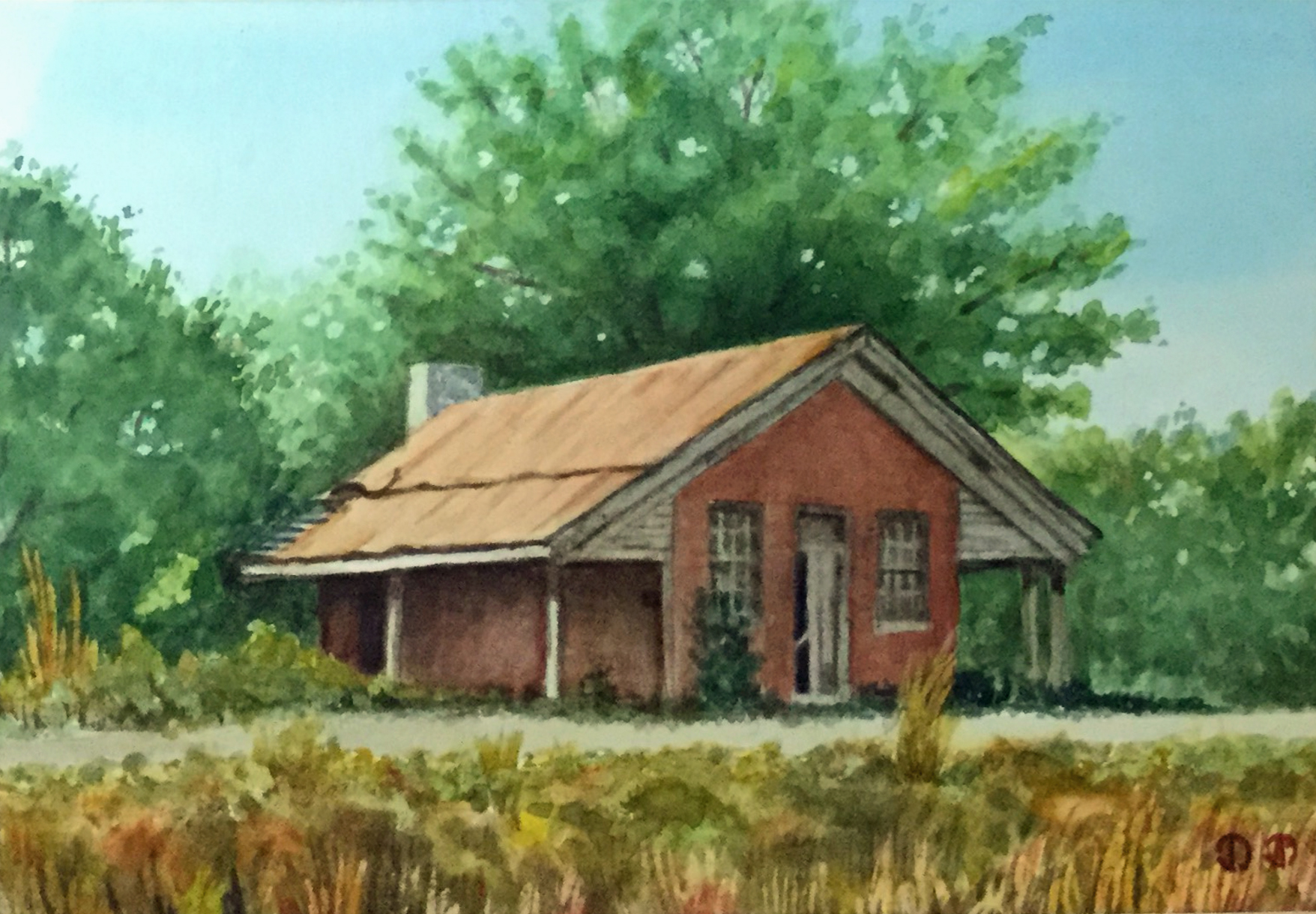
Scottsboro
In 1868, the Court Commissioners ordered the county records moved from Bellefonte to Scottsboro, which became the new county seat of government. On land given by Robert Scott, for whom Scottsboro was named, Jackson County’s second courthouse was constructed about 1870, and this area became known as “the Square” in Scottsboro. In 1912, this structure was torn down, and replaced by a new courthouse, about 50 feet square, costing about $25,000. This courthouse became the hub of Scottsboro’s growing business interests, most of which had been clustered around the railroad’s old freight depot.
In 1954, the courthouse underwent a much needed enlargement. To keep pace with the commercial growth of Jackson County, the courthouse was again enlarged and improved in 1967. The resulting courthouse and square is virtually that which is seen today.
Here are historical photos of the Jackson County Courthouse.
Jackson County Courthouse, 1871-1912

Courthouse drawing based on this photo by John Warr
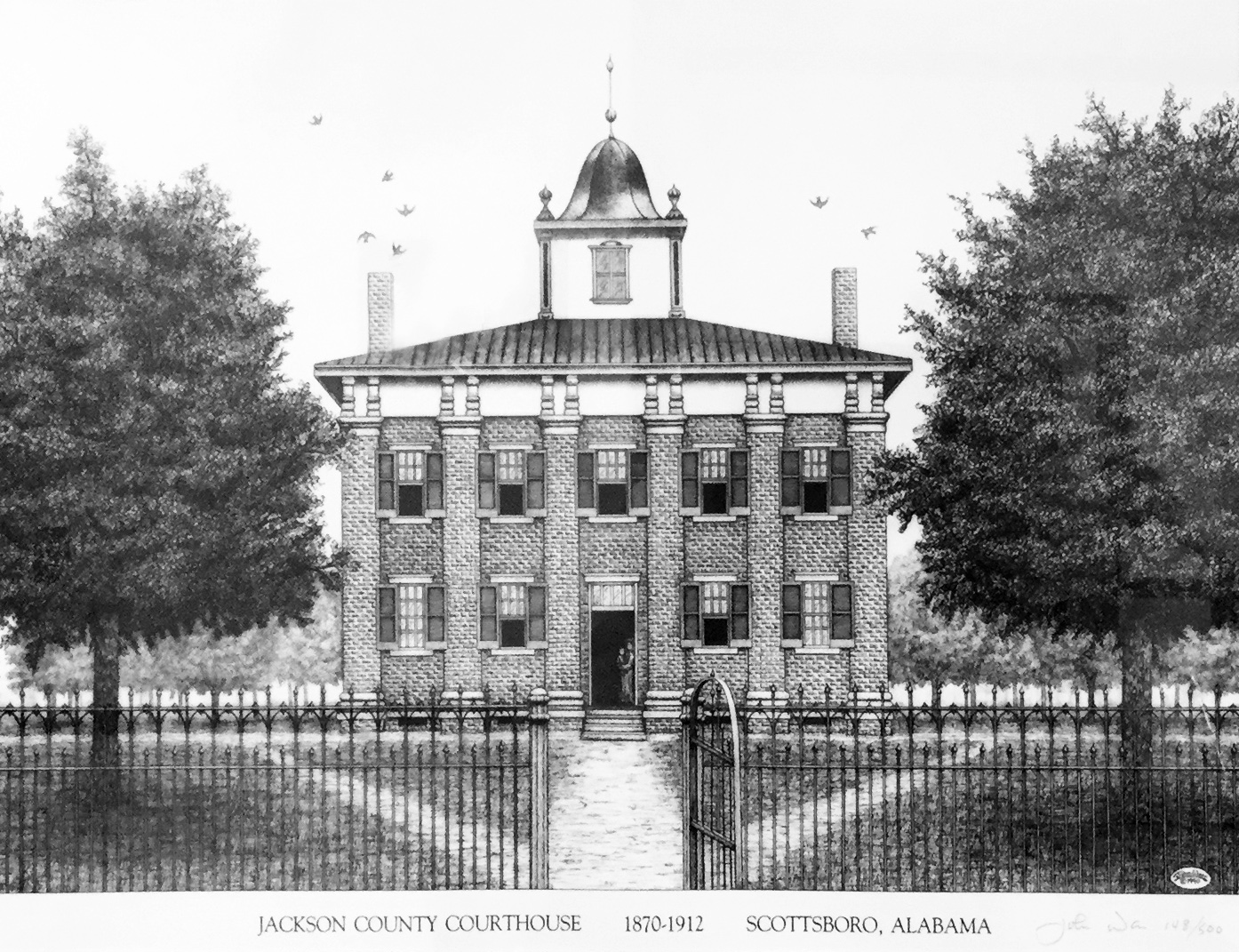
Strange photo from the archives
This photo is from the archives, clearly taken from another publication. The publishes down the left says “Age Publishing Company, Scottsboro, Alabama.” The placement of the building on top indicates that this is also the Scottsboro Courthouse, but it is believed that this is another courthouse in the state by the same architect, put here for comparison. It is NOT a Jackson County courthouse.
Ann Chambless explains: The 1900 Souvenir Edition of the Progressive Age carried a picture of the 1870 Court House with an inset showing a model of the proposed "new court house" based on plans made in 1900. However, the plans adopted in 1900 were never executed. It was May of 1912 before the work of dismantling the old court house actually began. On January 15, 1913, the county commissioners made the final inspection of the new building and received the new building from the contracts, the Little-Cleckler Construction Company. R. H. Hunt of Chattanooga (who was considered one of the South's leading architects at that time) was the architectural engineer for the 1913 court house.
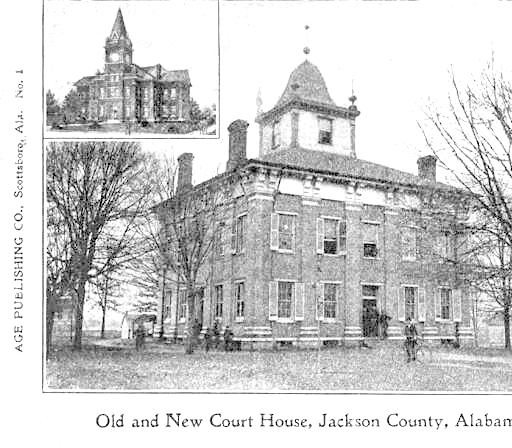
Better copy of the Archives courthouse from a postcard
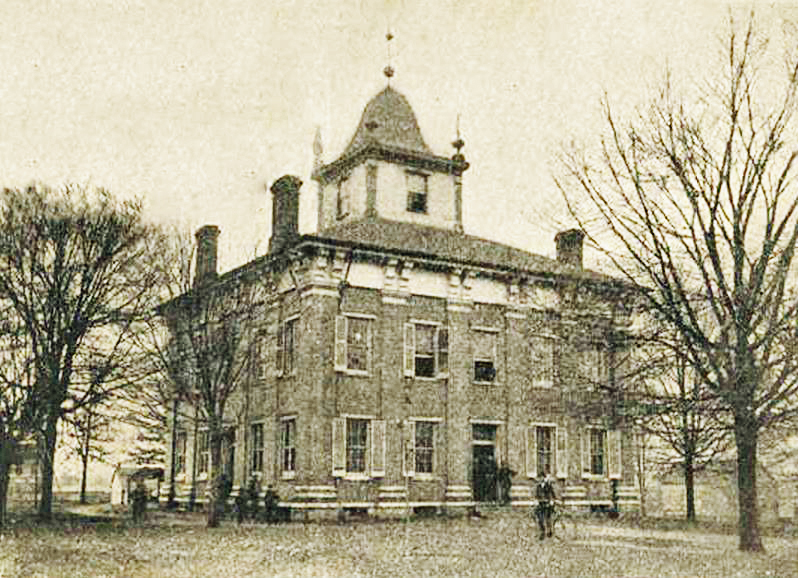
1912
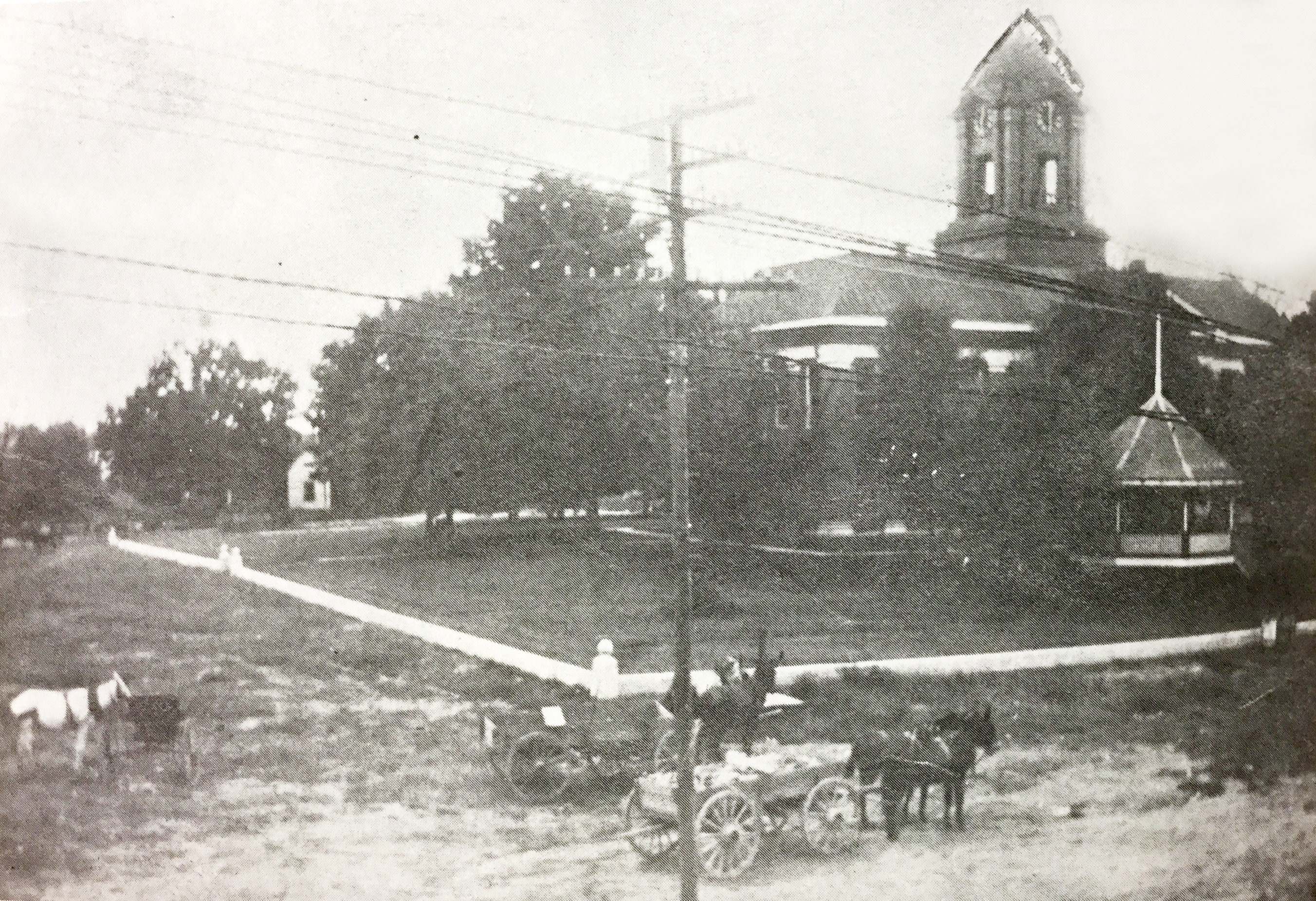
1913, front of the Courthouse from the location of the Ritz
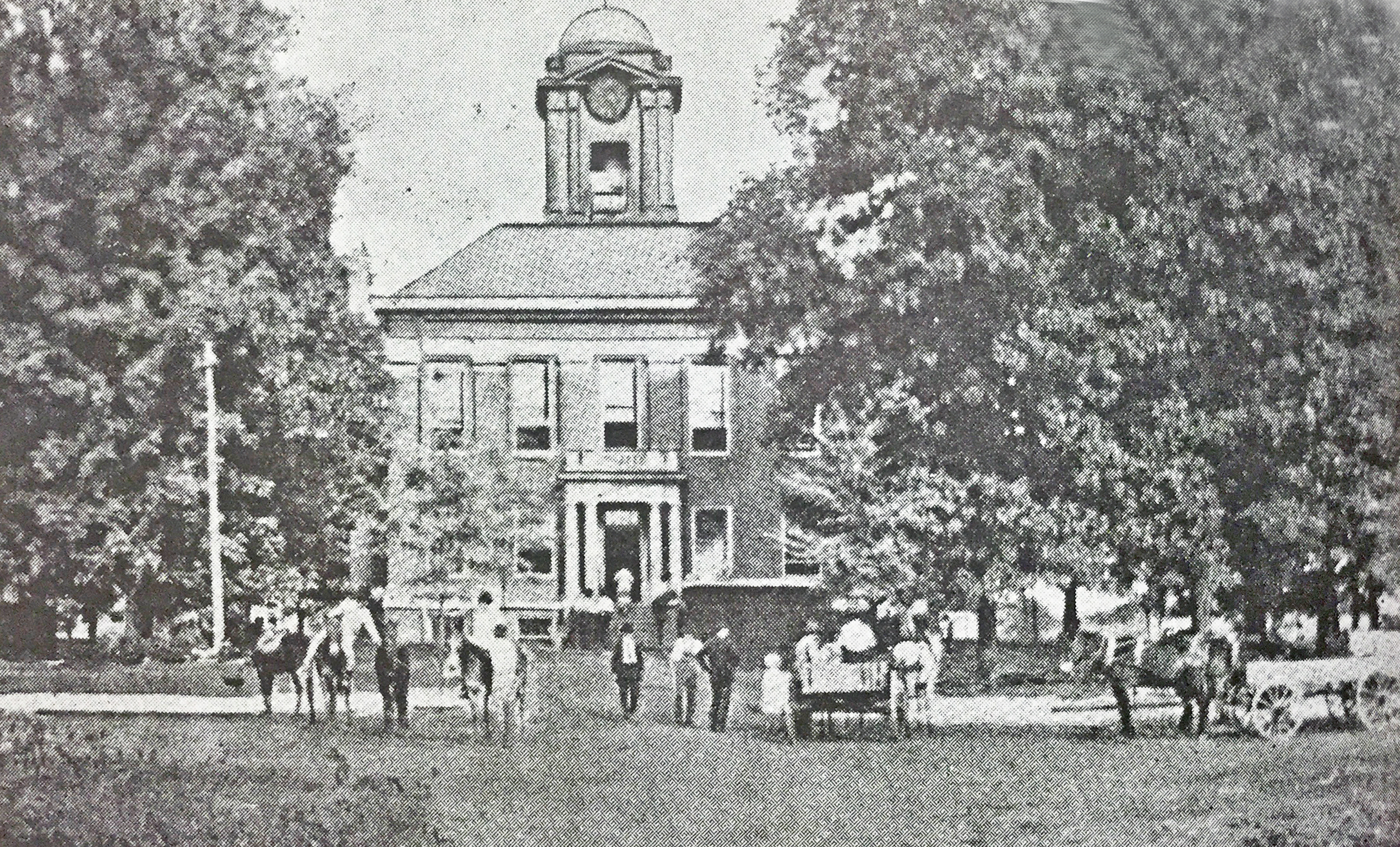
1913
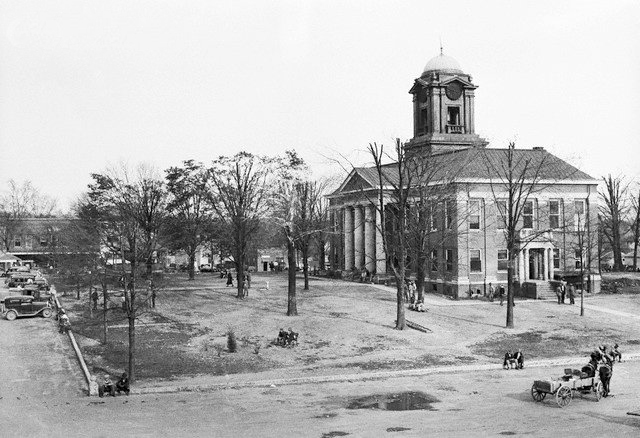
Courthouse Winter 1917
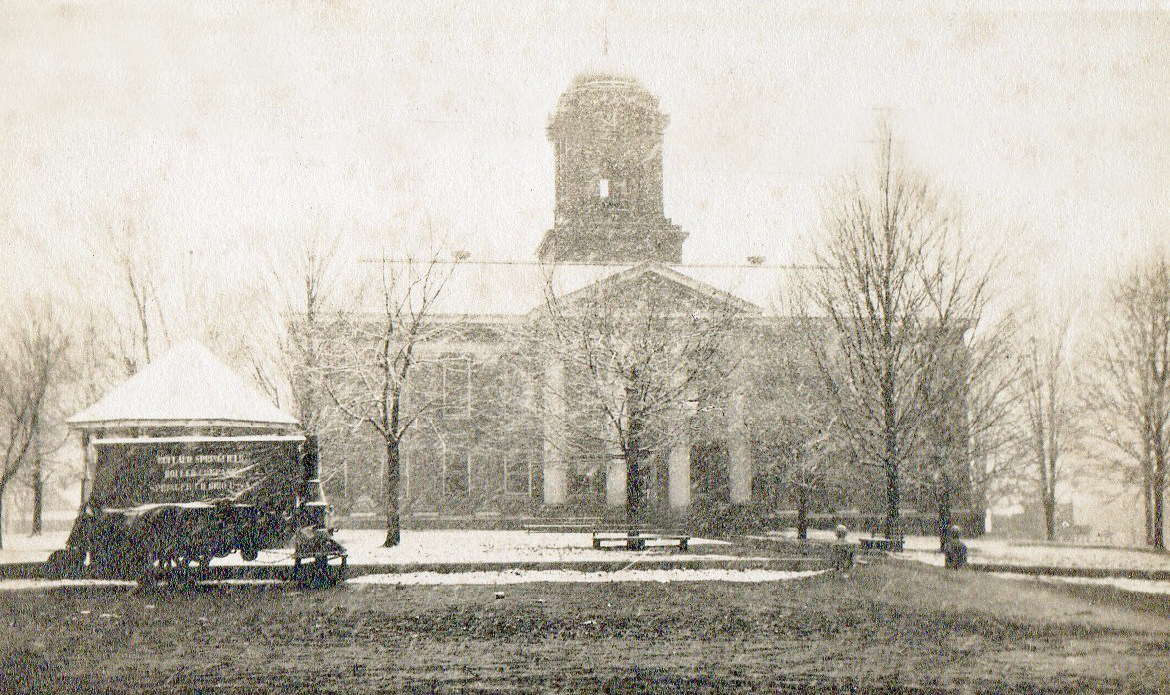
Courthouse 1917-18 by Leroy Gist Sr.
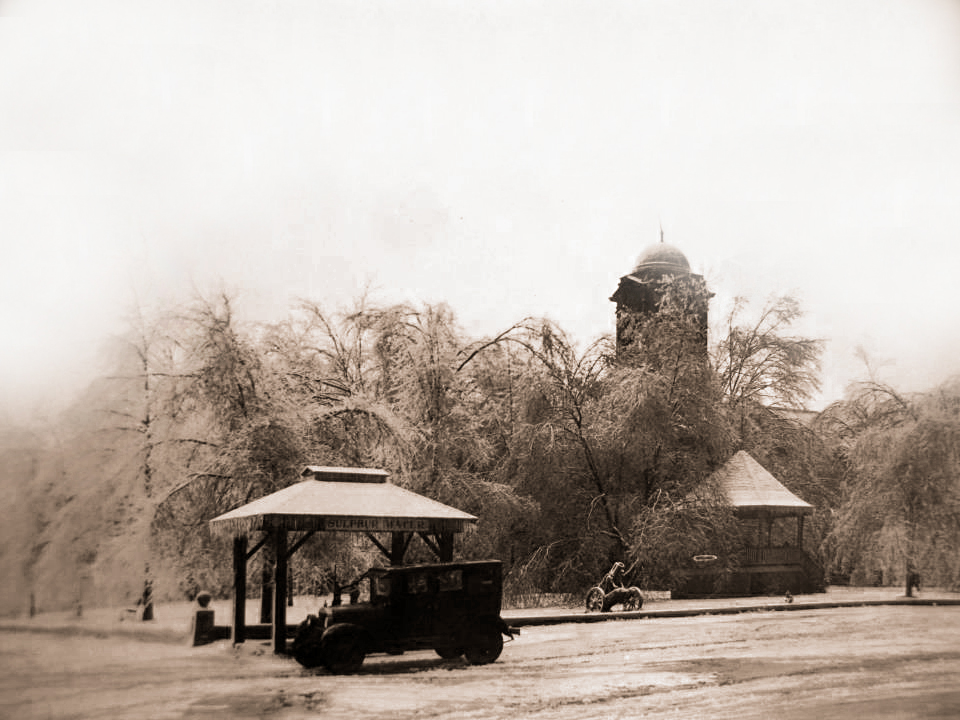
Hand-Tinted Photo of the Current Courthouse
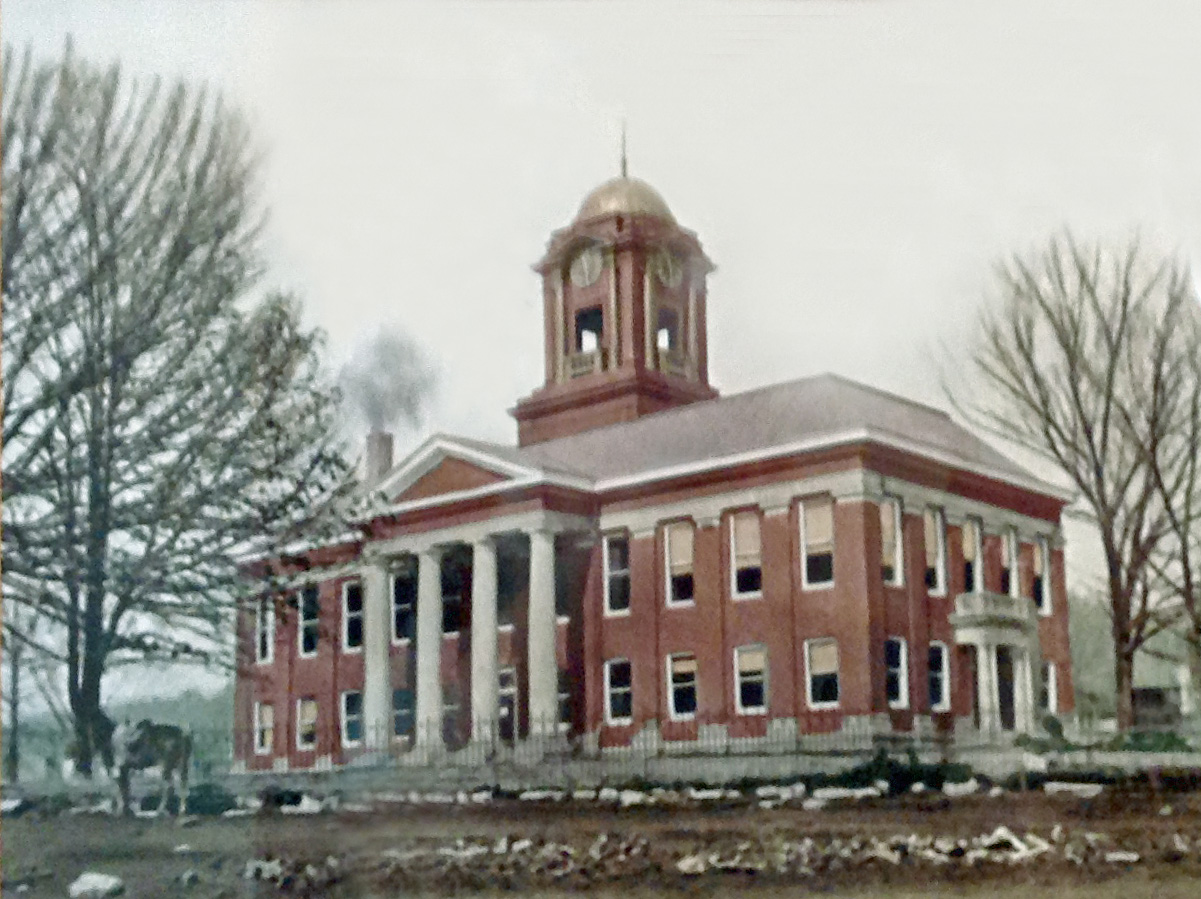
Courthouse 1920s
Notice that are horses and wagons only, no cars in this photo.
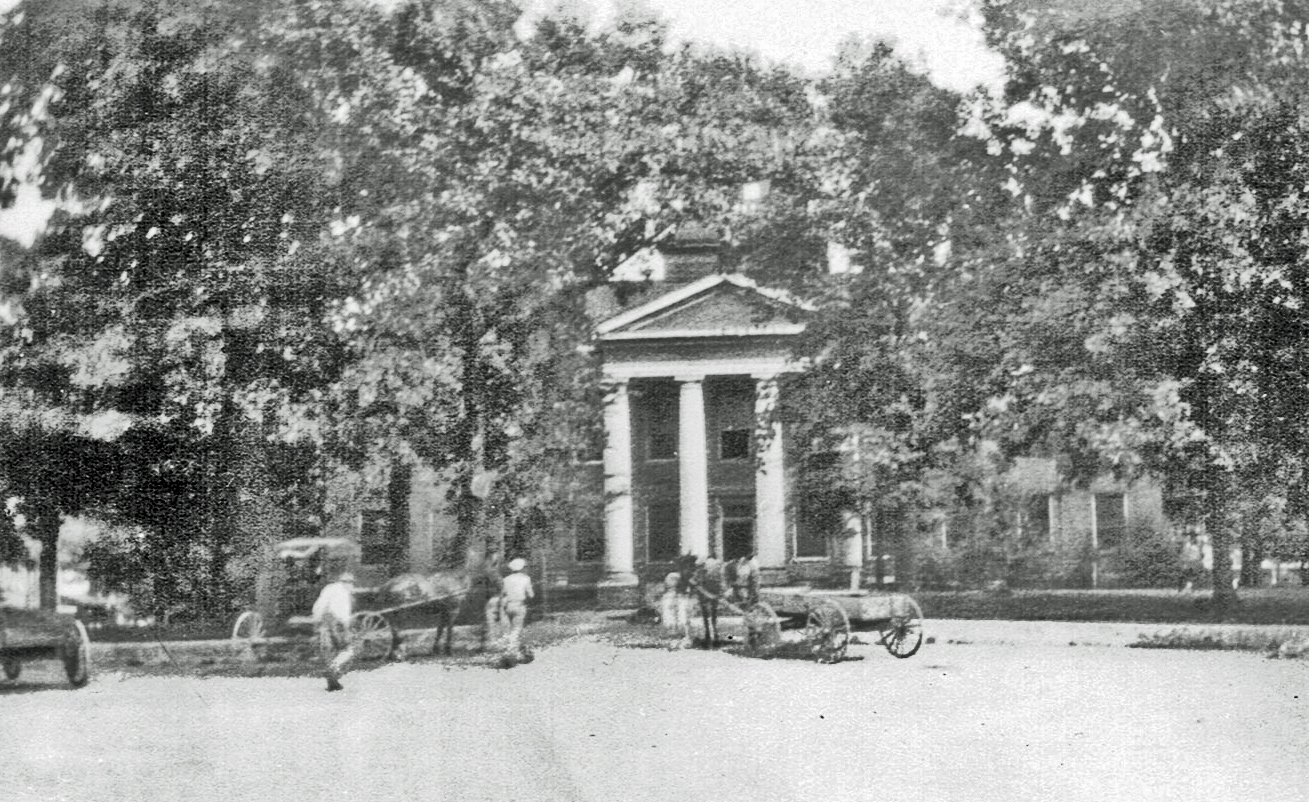
1930s photos by Thomas Shipp
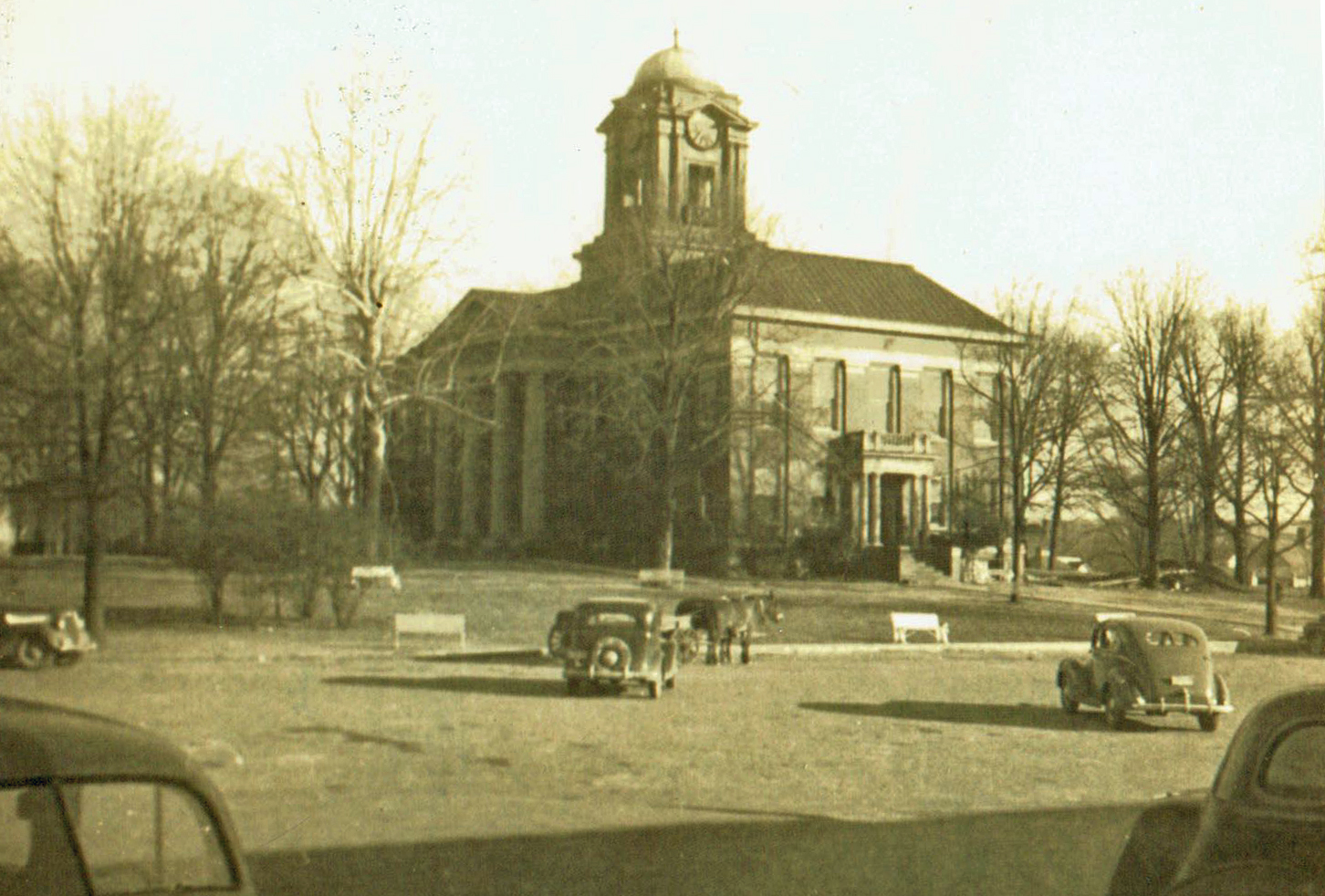
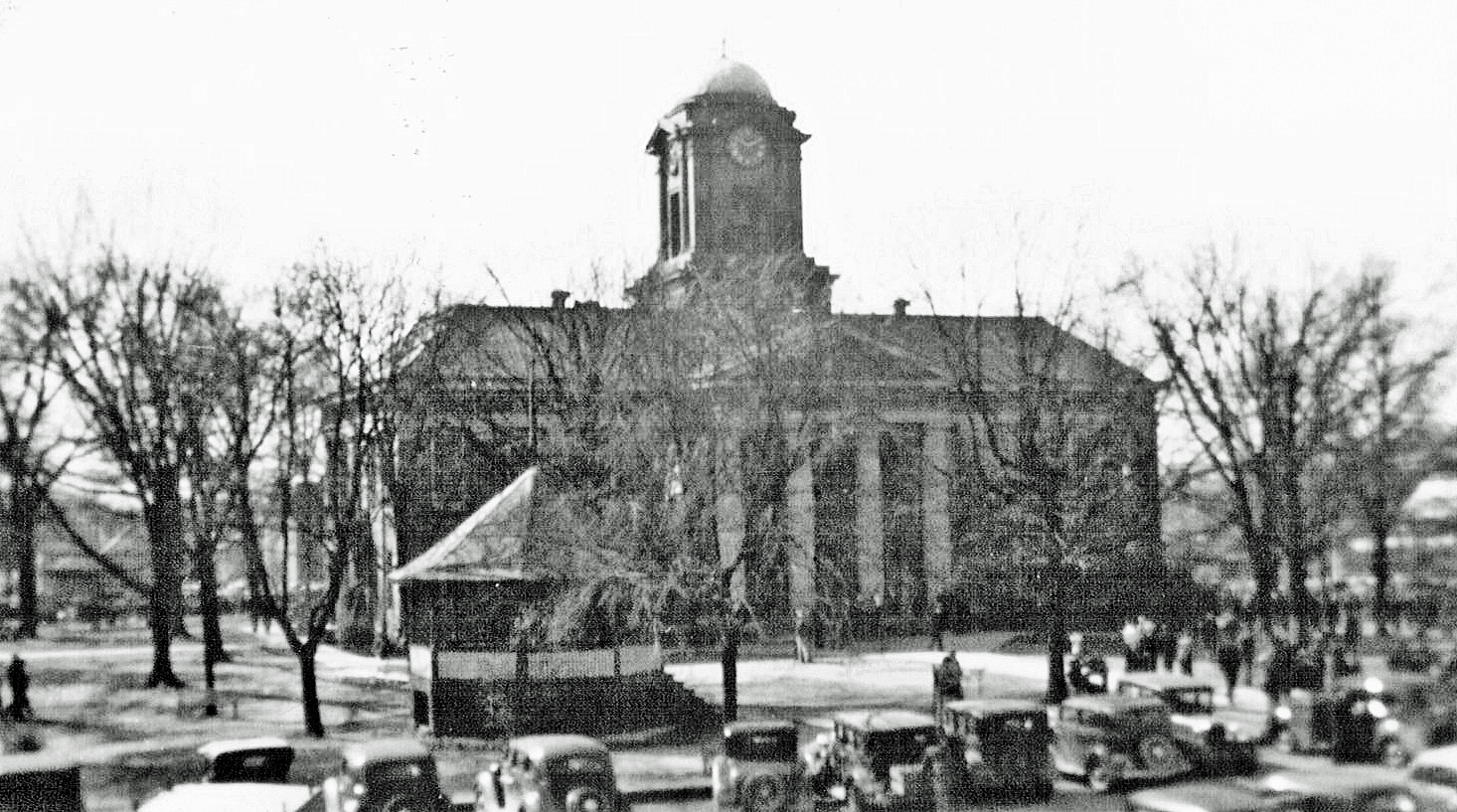
1936
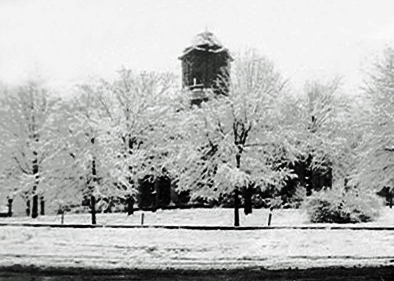
1940
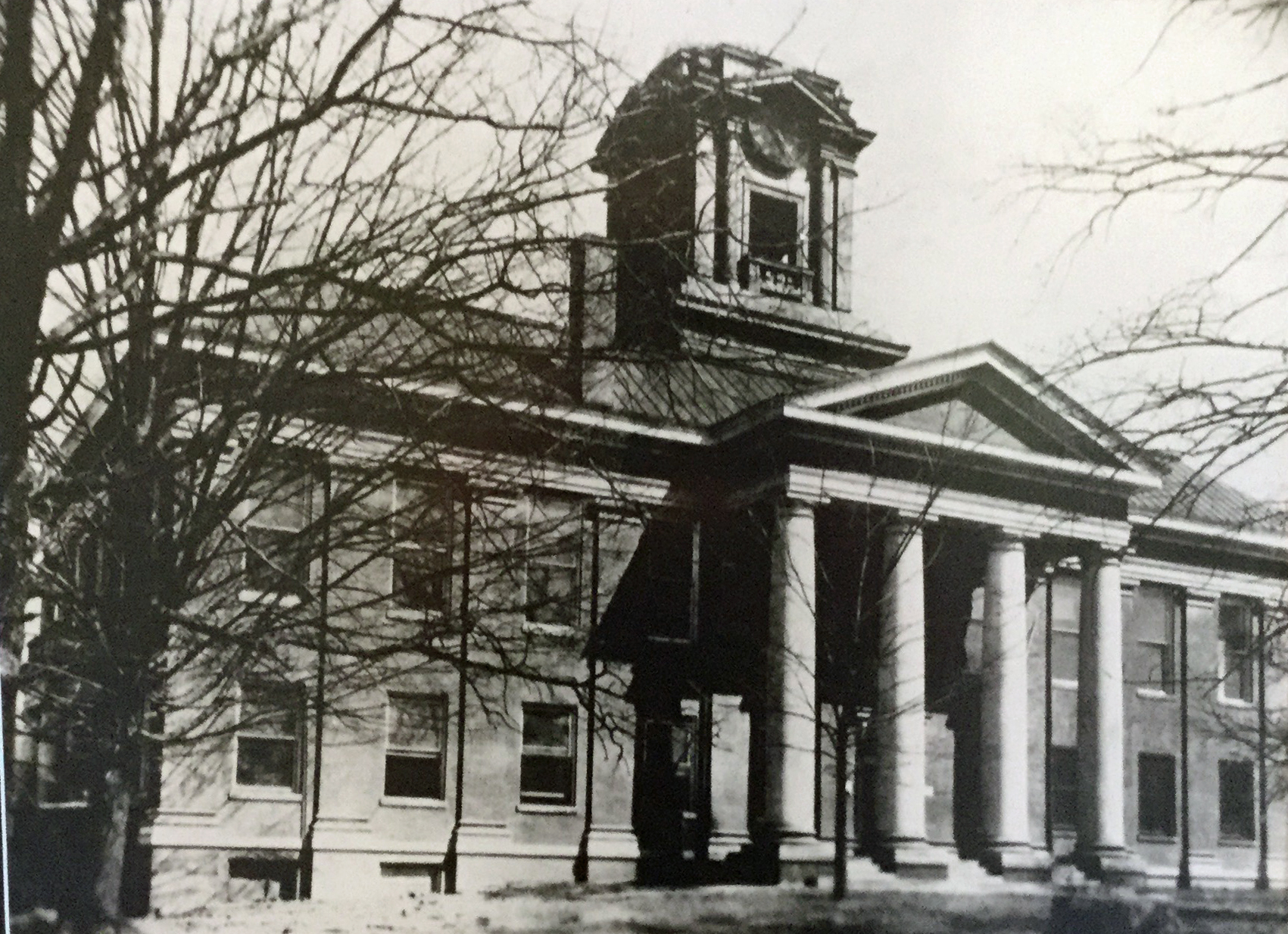
1940s with advertising on the sulphur well
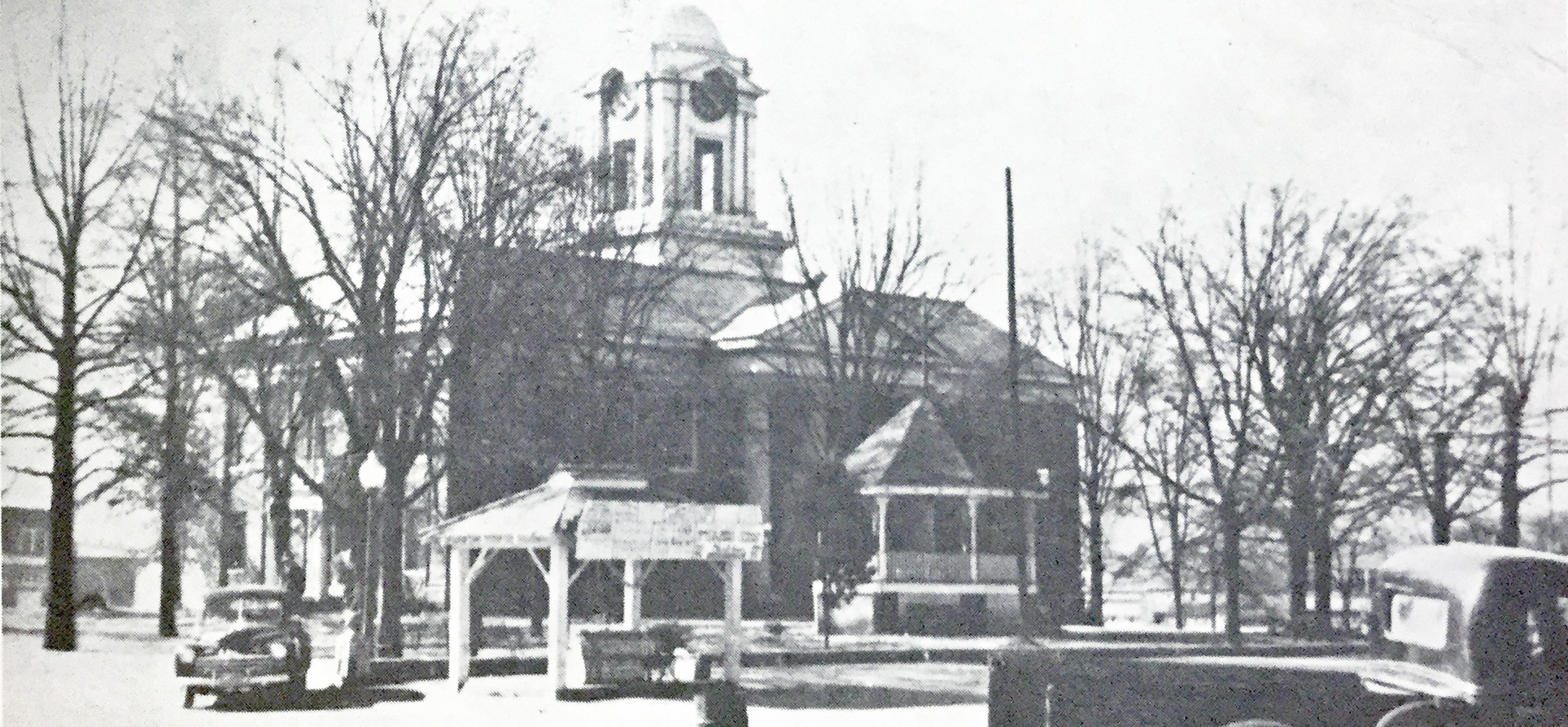
1940s postcard
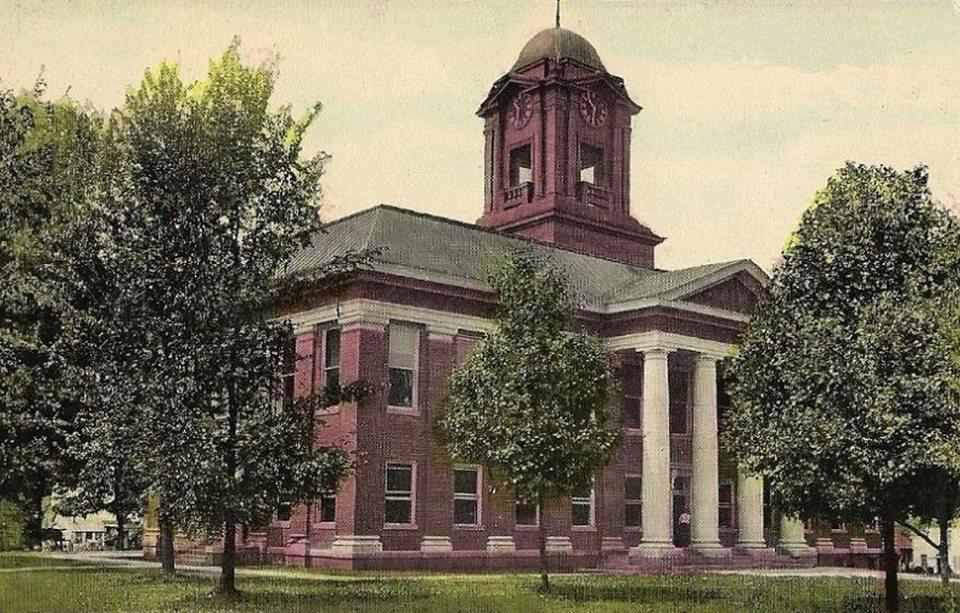
Early 1940s from Brenda Hastings
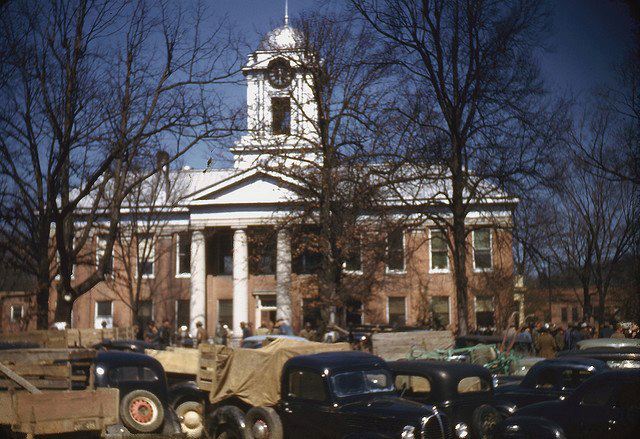
1940s Debi Posthuma’s Photo of the Courthouse
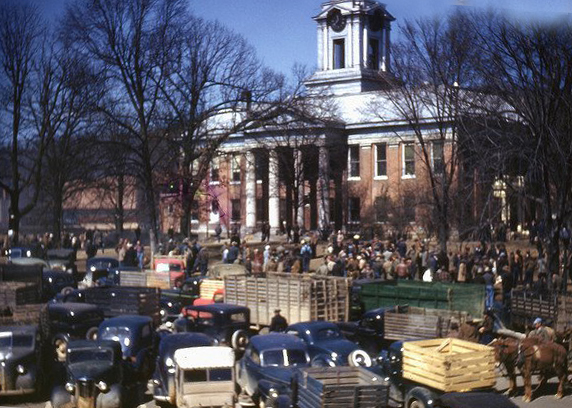
1950s, Courthouse postcard
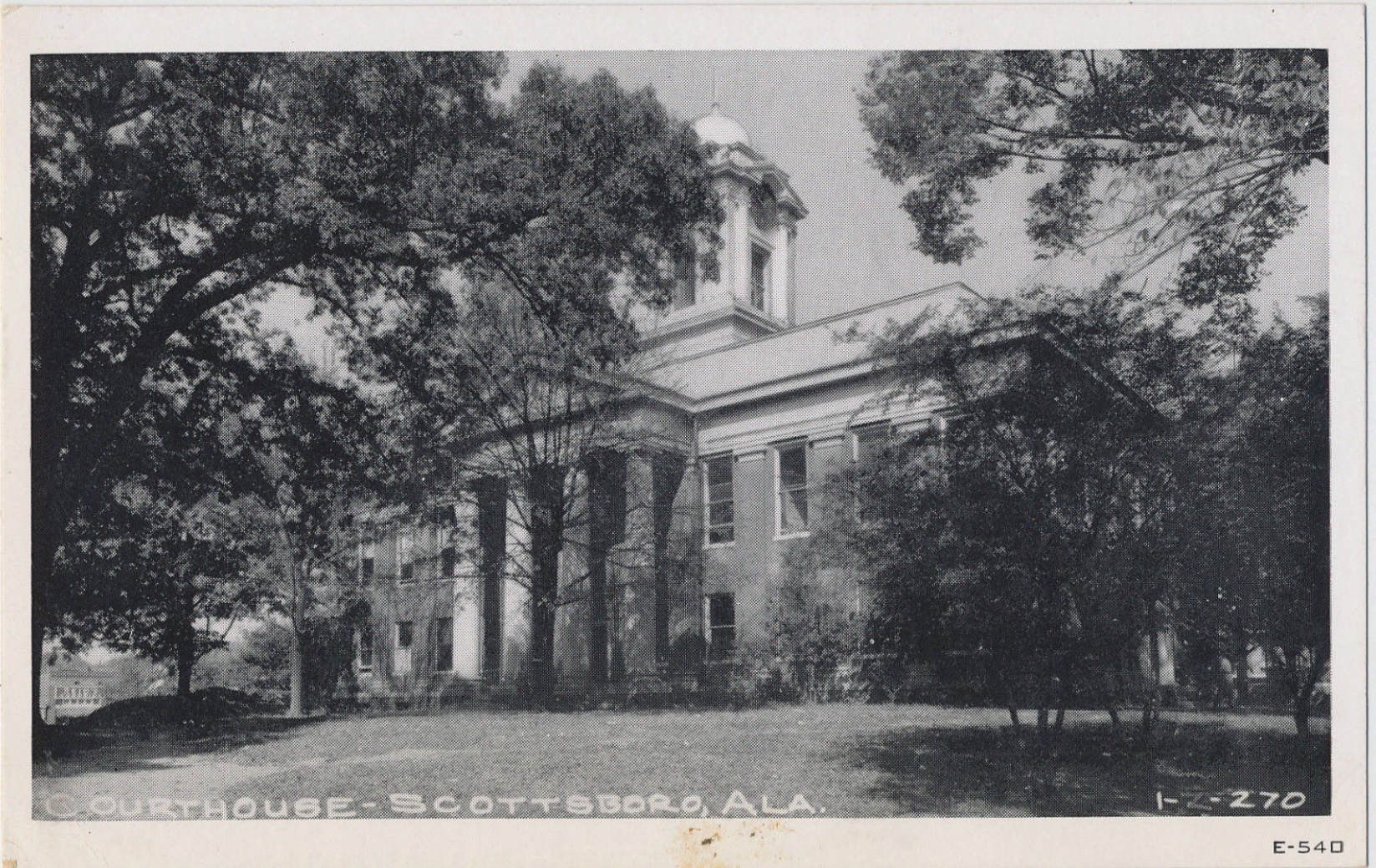
1954: Courthouse during construction of the east and west wings
Bill Bradford took this photo and the next one.
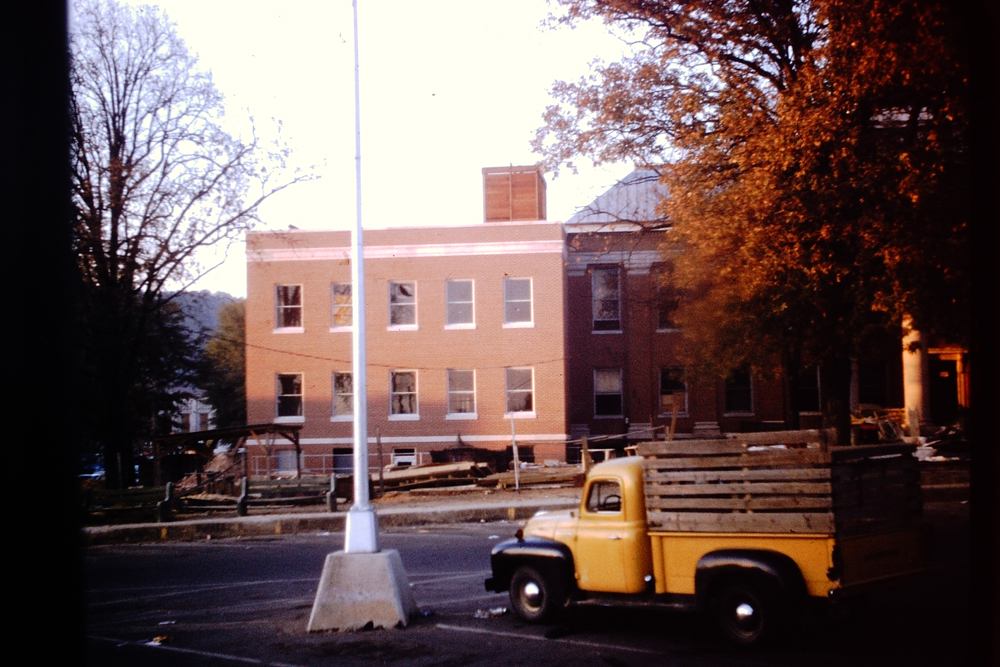
1955 courthouse shot from the south side Masonic Building
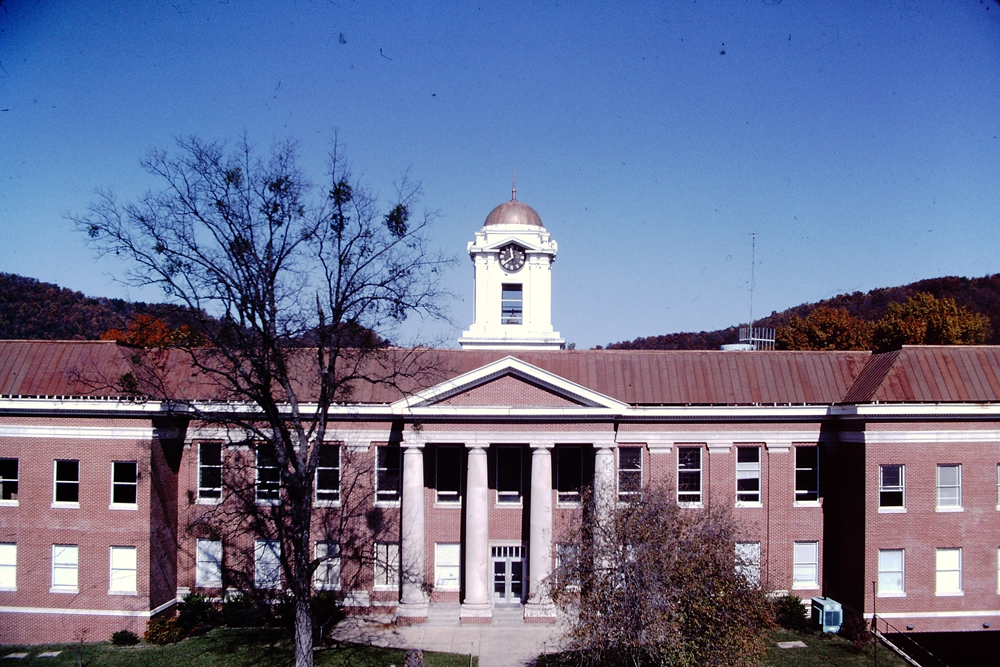
1961
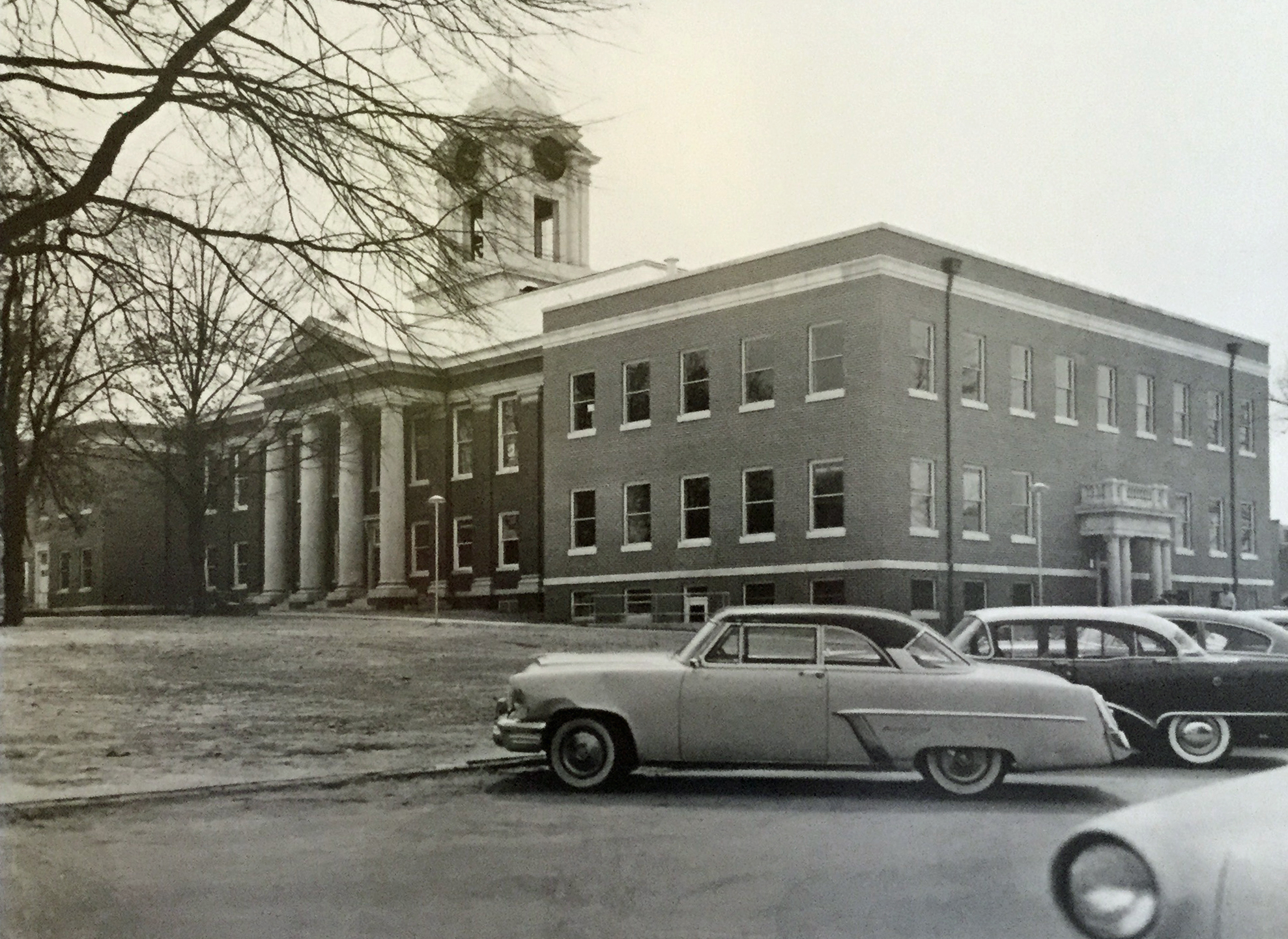
1964
This drawing was sold by a bank in Birmingham.
1972 from the city directory
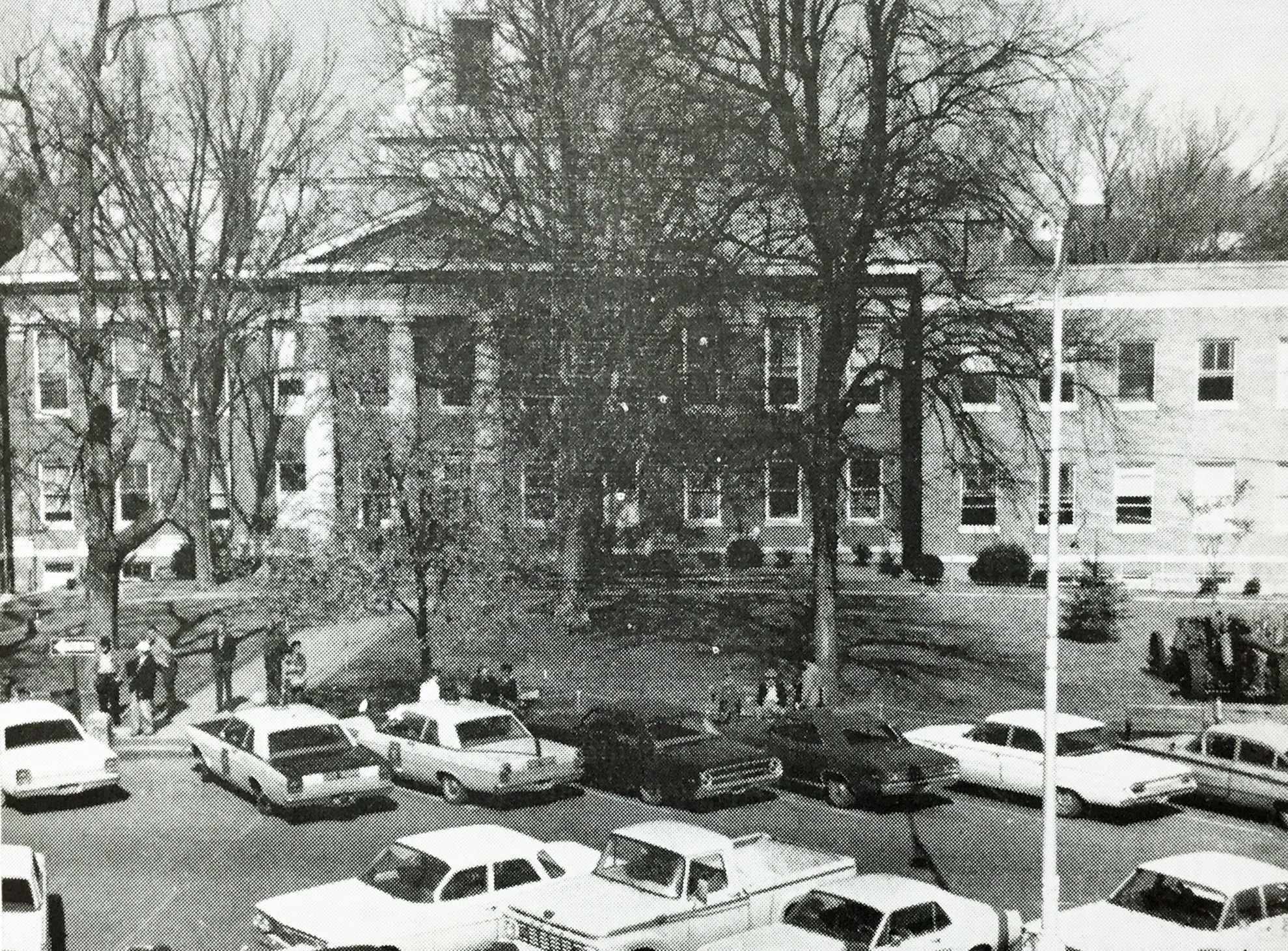
1975 from the Alabama Archives
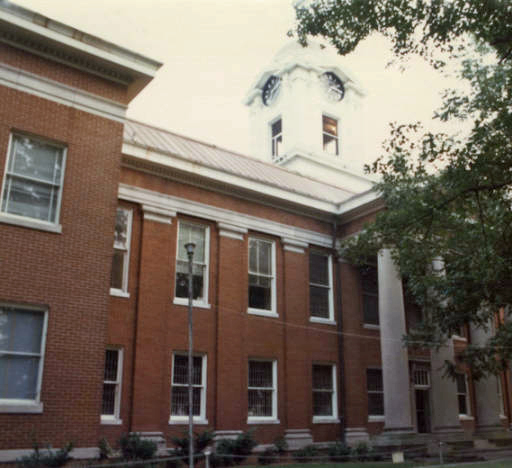
1999
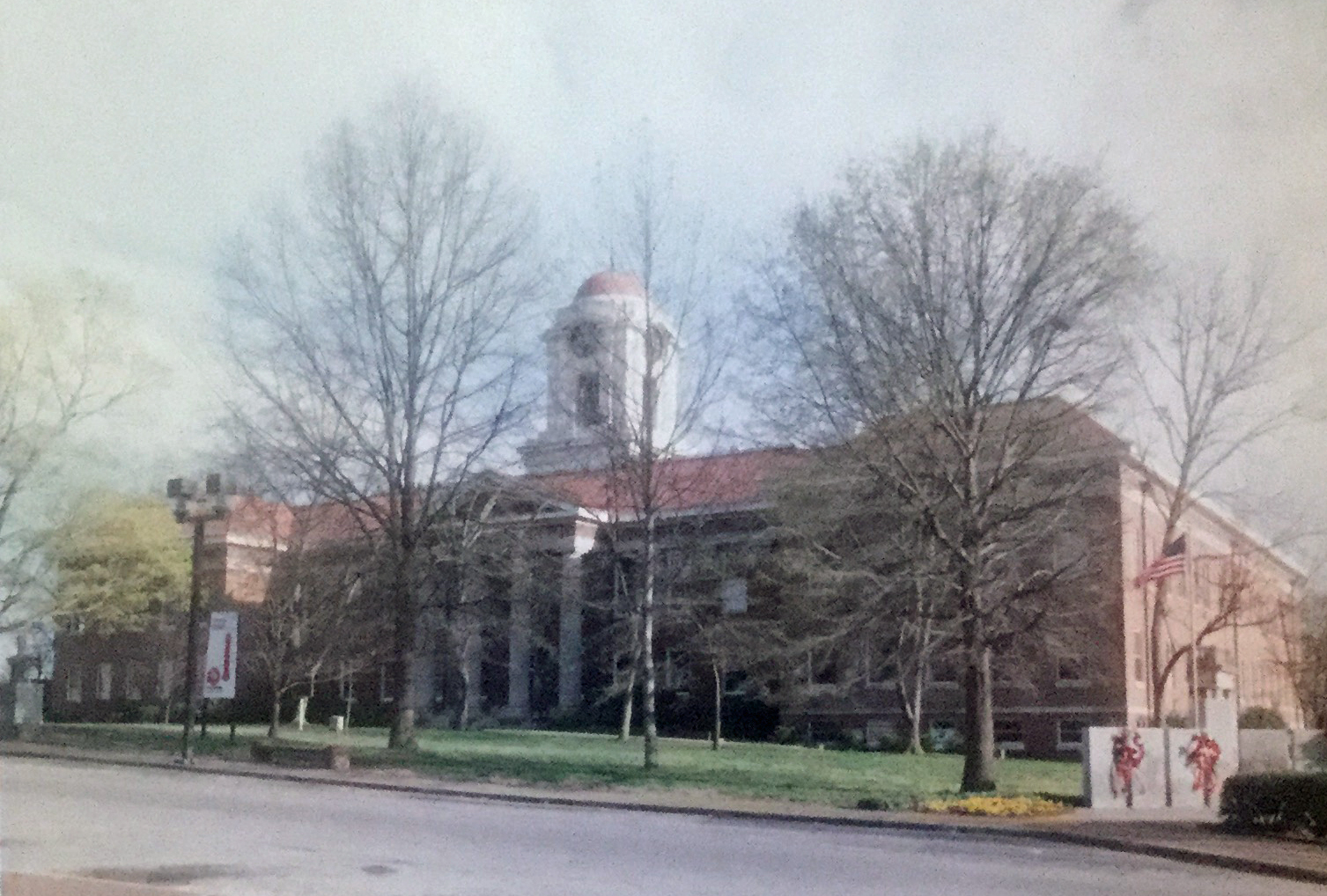
2010, from the roof of the Howland Building
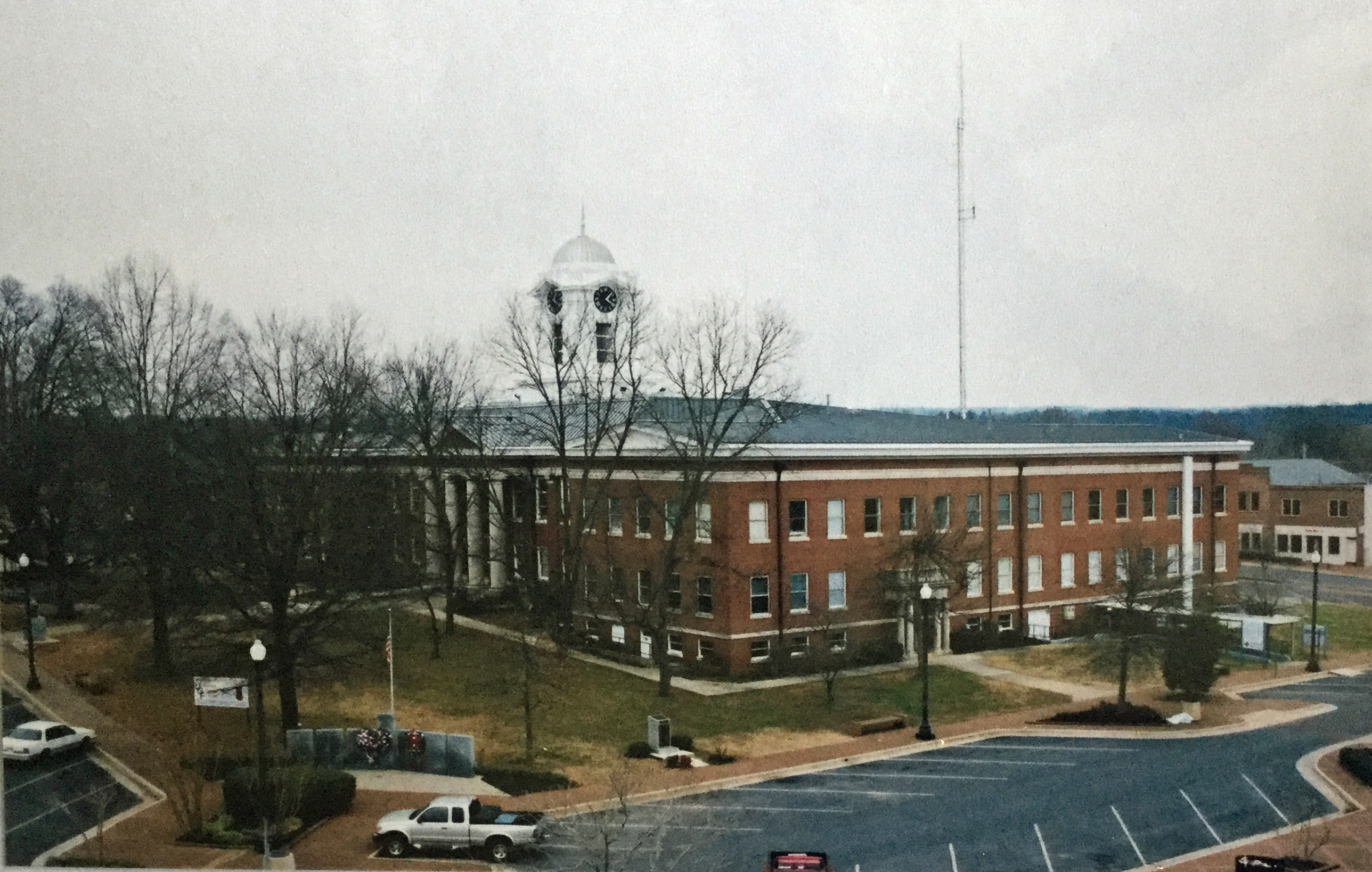
2016: Courthouse from upstairs in Hammers
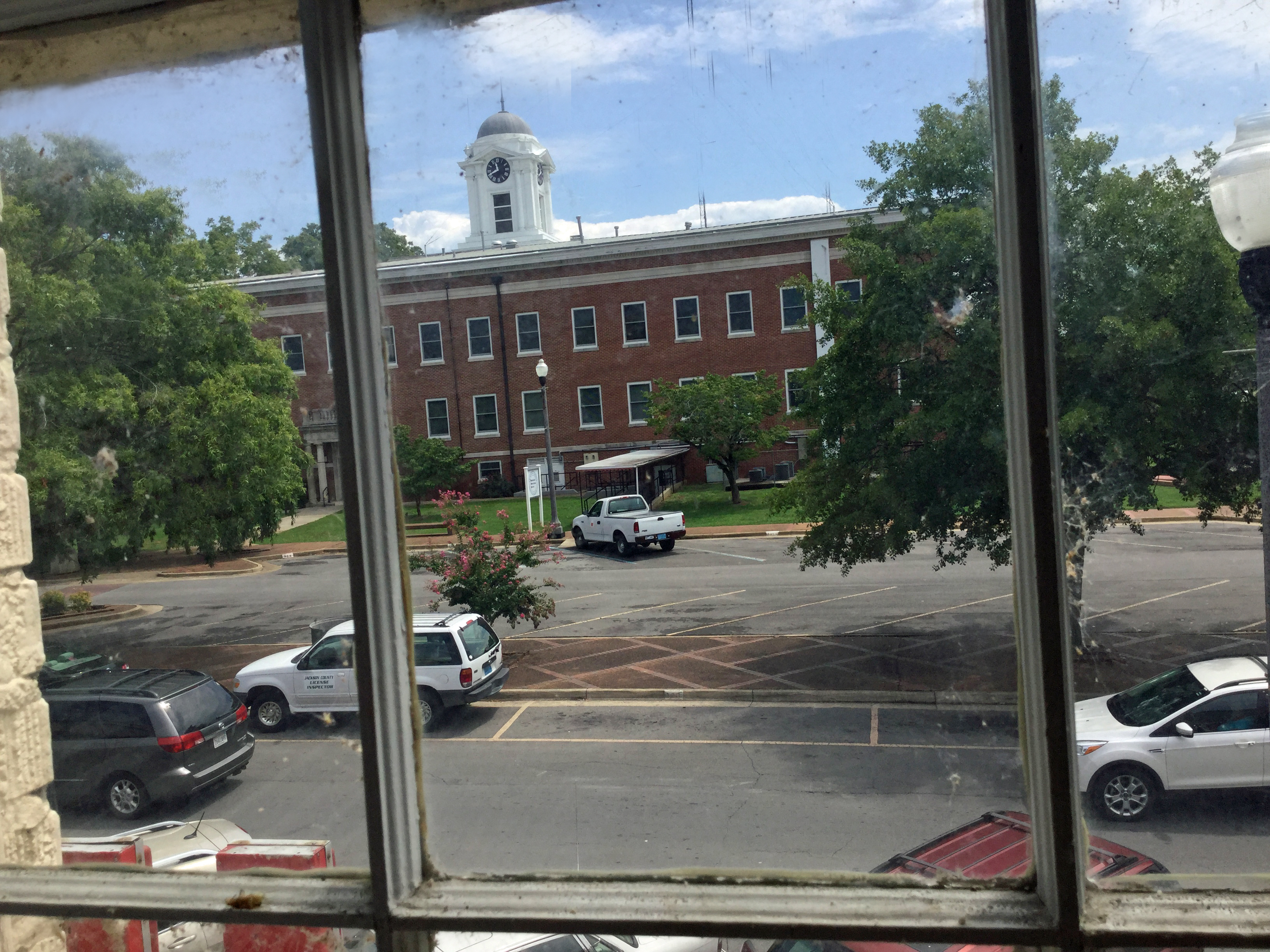
Courthouse at sunset
Drawing of the courthouse by an unknown artist
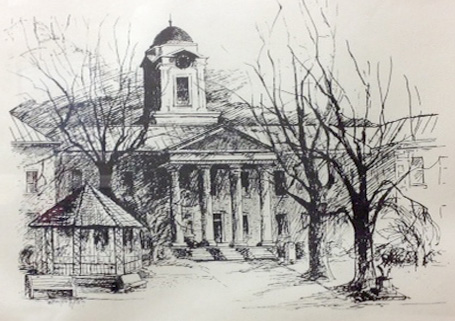
Dedication of the Andrew Jackson Statue
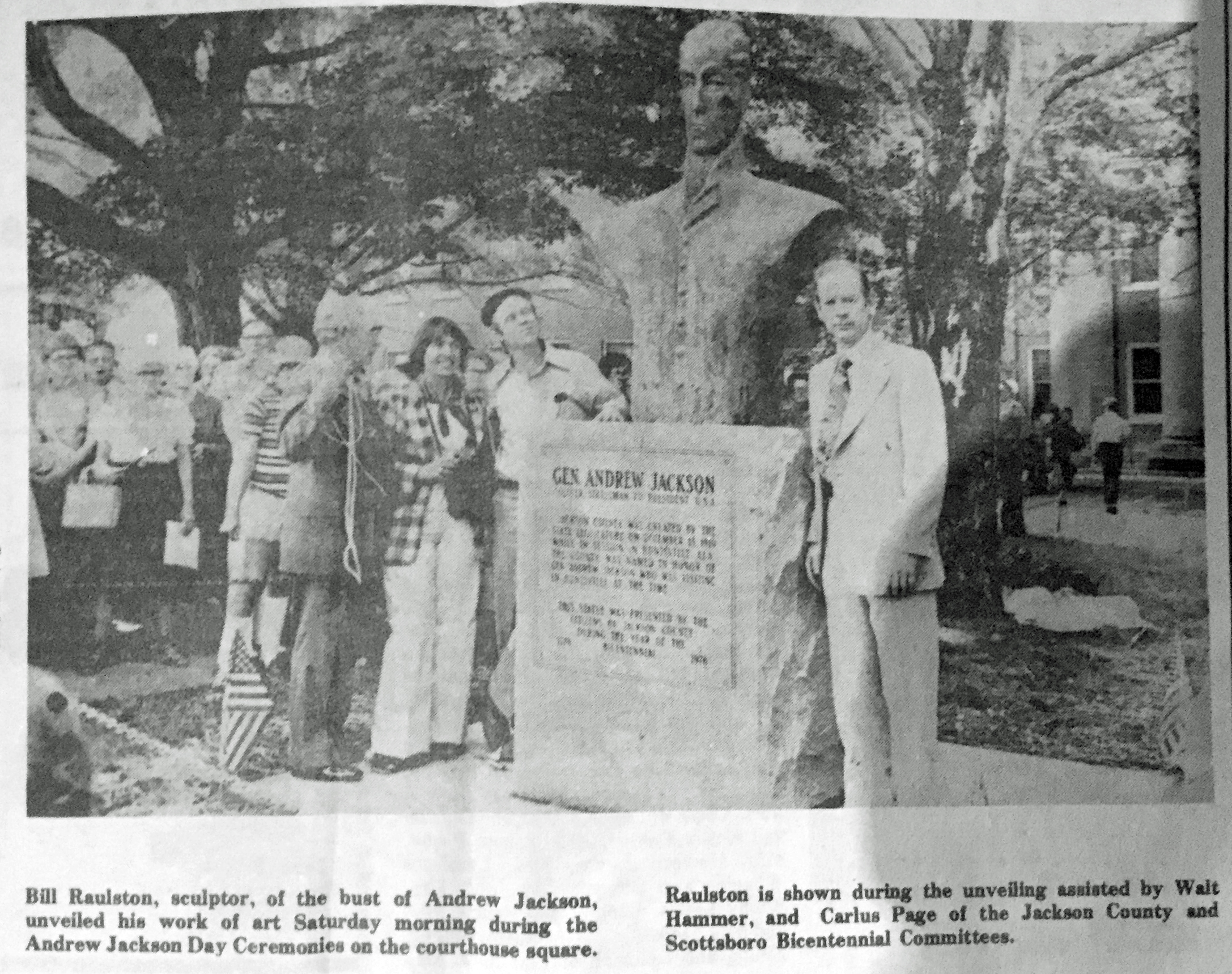
Early photo of one of the two sulphur wells
The sign says “5.00 Fine to hitch or let stock stand within 25 feet of this well.” Other views of the sulphur wells can be seen in the courthouse photos. Judging by the background, this is the well on the north side of the square. According to people who remember, there were wells on both the north and south sides of the square.
